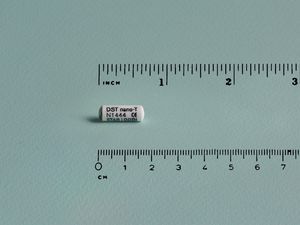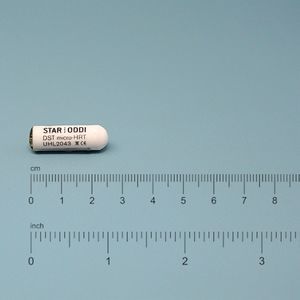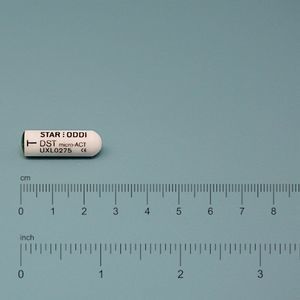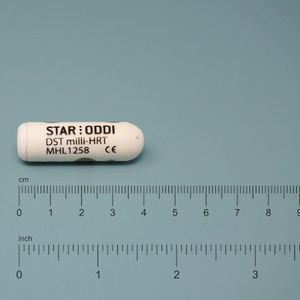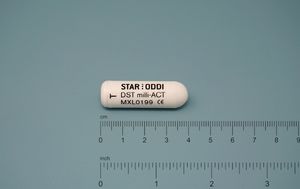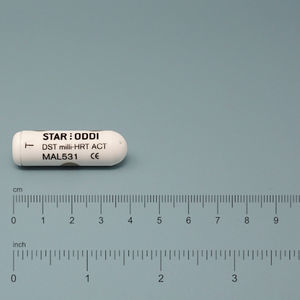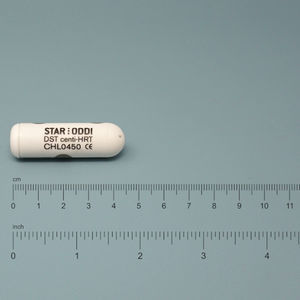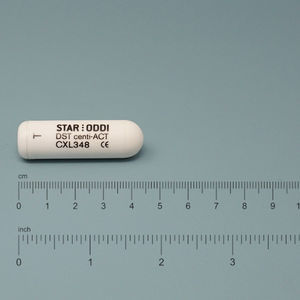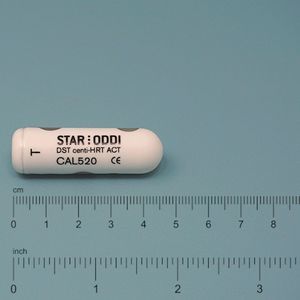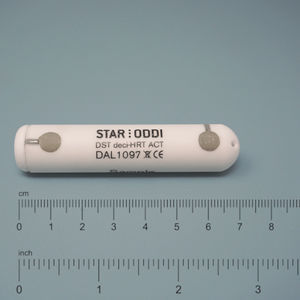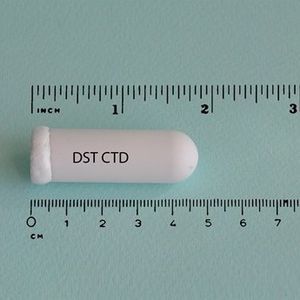
Registrador de dados de temperatura DST micro-TDde pressãode profundidadepara pesquisa com animais
Guardar nos favoritos
Comparar
Você quer comprar diretamente? Visite nossa loja.
Características
- Tipo de dados
- de temperatura, de pressão, de profundidade
- Aplicações
- para pesquisa com animais
- Outras características
- USB, pequeno, sem fio
- Temperatura
40 °C
(104 °F)- Diâmetro
8,3 mm
(0,3 in)
Descrição
Small Temperature and Depth Fish Archival Tag The world‘s smallest temperature and depth logging archival fish tag. Ideal for very small fish or marine animals for long term behaviour and migration studies. Developed in co-operation with fish biologists.Small and reliable archival fish tagLong life and flexible interval setupDepth sensors for different rangesFish implantation or external attachmentUser defined text on the housing High performance in small size Dimensions are only 25.4 mm x 8.3 mm and it weighs 3.3 g in air. Despite the small size of the logger, the DST micro-TD Data Storage Tag has high reliability and long lifetime. Therefore it is suitable for long term behaviour and migration studies of small fish, smolt and marine animals. Application The DST micro-TD is designed as an archival tag for migration, feeding and dive behavioral studies of small fish, seabirds and marine animals. The recorded time series data enable scientists to gain valuable information on migration routes and behavioural patterns over a long period of time. The tag can be implanted or attached externally. Long life and flexible interval setup DST micro-TD can store 87,168 measurements in total which means it can store data for 2.5 years when using a 30 minute interval, as an example. It is possible to set the logger to record with multiple intervals, shifting between different intervals during the measuring period. Also it is possible to choose different intervals for measuring depth and temperature. Depth sensors for different ranges, selected by the user You can choose between depth calibration up to: 150 m, 300 m or 1000 m. The shallower the range the better the resolution and accuracy. Fish implantation or external attachment The logger is designed as an implantable tag and can be implanted in the abdominal cavity. It can also be attached externally on a fish or marine animal using a tag holder kit, ensuring easier and safer attachment. User defined text on housing For tag and release of animals into the wild the tags can have a customized text on the housing, for recapture purposes. It is important to have the return information when the tags are used on commercially fished species, so that fishermen can return a tag with valuable data to the scientist. Normally there is a reward for a tag return. Spaghetti tag for spotting fish When the DST logger is implanted in fish it is possible to have a yellow plastic tube, a spaghetti tag, attached to the DST. The tube sticks to the exterior of fish, making it easier for fishermen to spot the tagged fish. Using the logger Simple in Use, From Setup to Data Retrieval The logger and the accompanying items are designed for ease of use throughout the research process, from setting up the logger, attaching it, to retrieving and analysing the data. The logger is supported by the SeaStar software and a Communication Box which have to be purchased with the first order. Programming the Logger To set the logger for starting measurements it is placed into the Communication Box that connects with a USB cable to a PC computer. In the SeaStar software, the user sets the start time, start date and sampling interval before starting the tag for measuring. The tag synchronizes its internal clock with the date & time on the computer being used. Single or multiple intervals There are two modes for sampling, either at a single interval throughout the period or multiple intervals. When choosing multiple intervals programming it is possible to define up to seven different intervals and number of measurements for each interval. Shifting between wide and narrow intervals can help in extending the measuring period due to memory limitation and have more frequent measurements during certain time periods, for example spawning periods. Memory and Battery Life Calculations The software automatically calculates when memory fills based on certain interval settings, making it easier for the user to decide how to program the tag. Estimation on battery consumption during that time period is also calculated. Uploading the Data After fish recapture, the tag is inserted into the communication box and the recorded data is uploaded to the software. The results are displayed both in graphic and tabular form and the data can be exported to other programs. The time series data shows each measurement with its own time stamp. Long battery life After data retrieval the data storage tag can be re-used, as long as the batteries inside last. Battery life estimation is always reported upon connection with the tag. Due to the low energy consumption circuitry design the battery life can be several years, depending on usage and sampling interval used. Specifications SensorsTemperature and pressure (depth) Size (Diameter x Length)8.3mm x 25.4mm Housing MaterialBiocompatible alumina (ceramic) Weight (in Air/in Water)3.3g/1.9g Data Resolution12 bits Temperature Range-2 to +40°C (28°F to 104°F)* Temperature Resolution0.032°C (0.058°F) Temperature Accuracy+/- 0.2°C (+/- 0.36°F) Temperature Response TimeTime constant (63%) reached in 8 sec. Standard Depth Ranges1m-150m, 1m-300m, 5m-1000m Depth Resolution0.08% of selected range Depth Accuracy+/- 1.5% of selected range Depth Response TimeImmediate Memory TypeNon-volatile EEPROM Memory Capacity87,906 measurements** Measurement IntervalUser specified in second(s), minute(s), or hour(s) Minimum Measurement Interval1 second Multiple Intervals OptionUp to 7 different intervals Measurement Options (Primary/Secondary)Temperature as primary, pressure/depth as primary Data Retention25 years ClockReal time clock. Accuracy +/-1 min/month. CommunicationsCommunication Box, wireless transmission when DST sits in the box. Connection to PC: USB cable. Attachment Hole0.5 mm (diameter) Battery Life28 months*** Replaceable BatteryNo *Other ranges available upon request.**Divided between the two parameters.***For sampling interval of 10 minutes, temperature and pressure recorded simultaneously.Warranty: 12 months.Specifications may change without notice.
Catálogos
Não estão disponíveis catálogos para este produto.
Ver todos os catálogos da Star-Oddi* Os preços não incluem impostos, transporte, taxas alfandegárias, nem custos adicionais associados às opções de instalação e de ativação do serviço. Os preços são meramente indicativos e podem variar em função dos países, do custo das matérias-primas e das taxas de câmbio.


